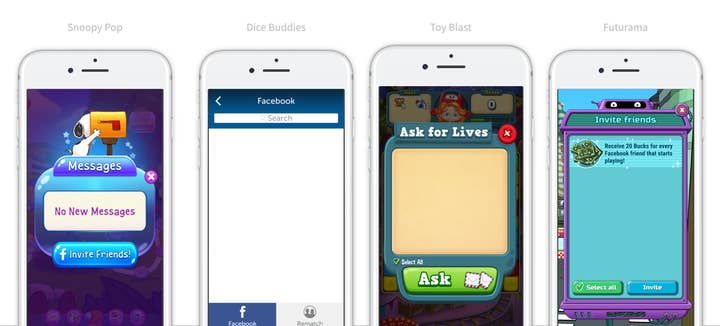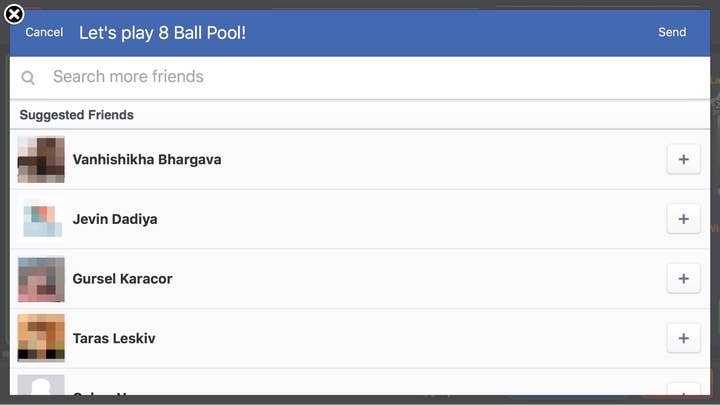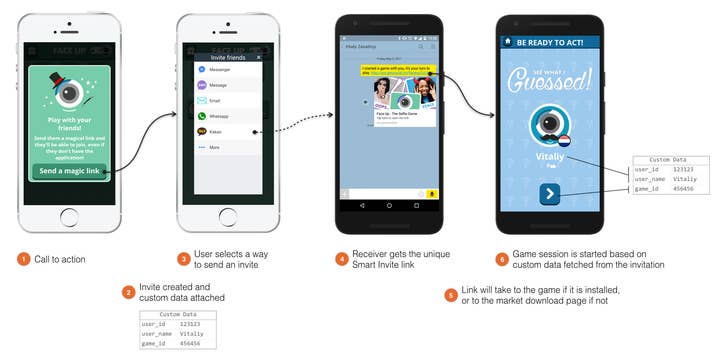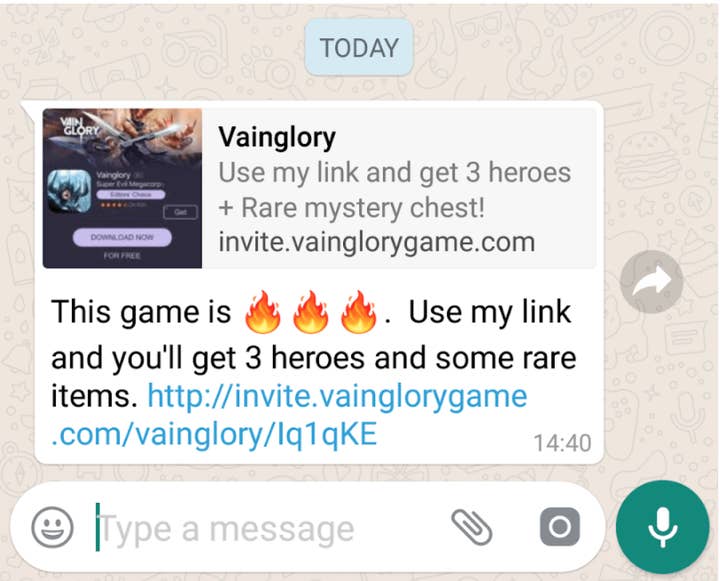How to design your mobile game for maximum virality
With Facebook clamping down on app invites, GetSocial COO Viral Patel offers tips on acquiring users organically through other channels
Until earlier this year, user-get-user referral marketing through Facebook had proven to be a popular source of organic user acquisition. It was common for anyone playing a mobile game to see a list of their friends and be prompted to invite them to play, or even reward them with lives or other bonuses if they invited others to join the party.
Unfortunately, Facebook sounded the death knell on this kind of user acquisition when it began deprecating app invites on February 5 this year. Facebook further deprecated its Invitable Friends API with little notice on April 4. This was the one feature that games relied on extensively to enable players to invite hundreds of their friends with just a click.
Shutting down these APIs didn't just impact virality, the games also took a substantial hit in terms of social engagement.

Given these developments, it's important for mobile game developers to diversify the different ways and mechanics they use to acquire users through social and viral channels, reducing their reliance on a single platform such as Facebook. An extremely important variable to measure the effectiveness of viral user acquisition is the viral coefficient - also known as K-factor.
Viral coefficient (k-factor) = i*c
The viral coefficient of a mobile game depends on two metrics: the number of invites sent by each user (i); the percentage of conversions on invites (c)
How to increase your viral coefficient (k-factor)
Here are a few best practices for you to follow in order to increase your viral coefficient:
- Have a sharing mechanism in the first place
- Make it easy to find i.e. don't hide it in settings
- Make sharing and inviting part of the core game loop
- Enable players to invite their friends through their preferred invite channel
- Clearly explain the benefits of inviting their friends
- Incentivize them for referrals
Our own analysis of 60 million gamers shows a 2.7x increase in invites sent and a 5.3x increase in sent-to-install conversions following implementation of these best practices. All of us have a tendency to skip a task if it involves too much effort. The same holds true for a user who is thinking of inviting his friends. The easier your sharing mechanism is, the greater the number of invites (i) they are willing to send.
A few placements of the invite/share button used by popular games to increase the number of invites look like this:
Visibility is just one aspect of a referral campaign. The key is to make the invite process frictionless. Some of the different ways in which apps implement their invite process include:
- Native sharing: Polluted with apps not related to sharing i.e. Paypal, Bluetooth, etc.
- Facebook game requests: Requires user to authenticate with Facebook and recipient to not have muted game requests
- Referral codes : Require users to copy paste referral code
These mechanics introduce friction into the sharing process. For instance, some e-commerce companies report breakage of 30% to 40% when using referral codes (the recipient forgets to enter the code). We've also seen instances where the developer moved from native sharing to a curated list of channels that resulted in an increase of over 100% in the number of invites sent.

To avoid these issues, it's important to create a custom invite flow with a list of popular social media channels - such as WhatsApp, Messenger, SMS, Email, KakaoTalk, and so on - as well as use attribution technology that can:
- Handle deferred and contextual deep-linking to avoid the use of referral codes
- Support link customization with a custom domain
- Support Cross-platform
- Prevent Install Fraud
Incentivized sharing
Rewarding users for successfully inviting their friends is another dial you can turn to improve the number of invites sent. The more valuable the incentive is, the greater the participation. For the reward to work, you have to make use of an attribution technology with device fingerprinting that supports deep linking, both contextual and deferred.
Time it right
For a referral program to be successful, you need to time it right. You can't just expect users to invite their friends to the game when they haven't experienced what it has to offer. The right time to ask for a referral is when you create a 'WOW' moment for the user, or give them an interesting piece of content to share.
A good example here would be the game Doomsday Clicker. It nudges its players to share in-game progress with friends. When a level has been completed, a small nudge asking them to "share their chaos" pops up on the screen right before they move to the next level. This placement and timing make it natural for a user to share the news with his or her friends.

Increasing "c" contextual onboarding
Virality is not just about getting more of your users to send an increasing amount of invites to their friends. It's what you do after the referred user accepts the invite that keeps the loop going. You need to ensure that users experience exactly what they expect from the given recommendation and, more importantly, be connected with their friend who invited them.
Most games are still relying solely on Facebook's Graph API, which requires both users to be connected with Facebook, and then adds to the friction we have discussed above.
As a game developer, you need to ensure a smooth onboarding process to increase conversions (c). For example, Ubisoft's FaceUp has a smart referral program in place. The user can share an invite with friends via any of the social channels or chat apps they use.

On receiving the invite, the referred person can simply click on the link, install the game, and start playing with his/her friend. The attribution link shown above has contextual and deferred deep-linking, passing on sender information and other game-related custom data to the referred user post-install.
Ongoing optimization
You can never perfect an app referral marketing campaign if you don't test and optimize on an ongoing basis. The best way to understand if your referral marketing campaign is going to be a success or not is to keep a close eye on how your existing, potential and new users are interacting with:
- The invite message
- The Incentive
- Invite/share button placement
One example is Super Evil Megacorp's title Vainglory. It tweaked the game's messages and images, which resulted in a message that converts 3x better than the original. Similarly, developer Fluffy Fairy saw a 28% higher conversion by simply tweaking the invite message.

Ongoing optimization
While Facebook deprecating its most used features for virality put developers at a disadvantage, there are still plenty of ways to diversify and optimize your viral funnel. The key is taking a thorough approach and making sure it fits with your overall game. Simply put, the only way to ensure an active participation in your game's referral program is to:
- Make inviting friends a part of the user journey as natural as possible
- Make it easier for players to send invites on social media and popular chat apps
- Reward your active referrers to keep them motivated
- And of course, track the effectiveness of your referral program
Viral Patel is the founder and COO of GetSocial